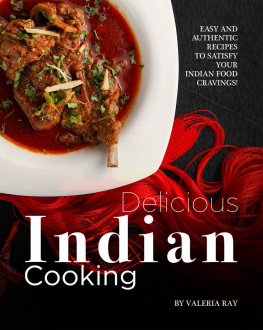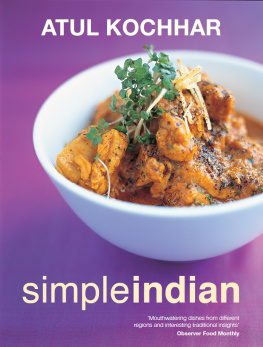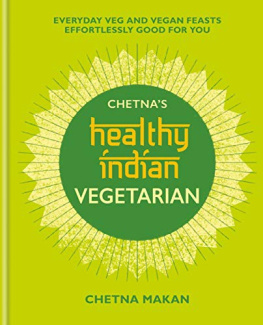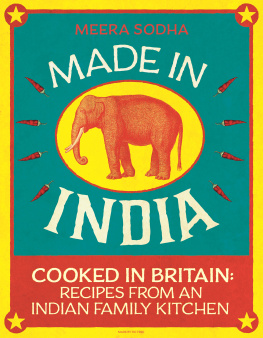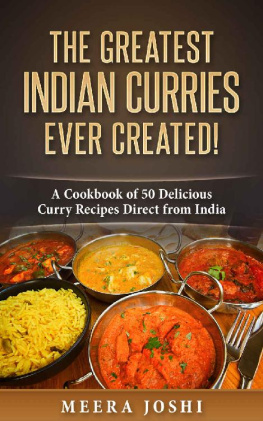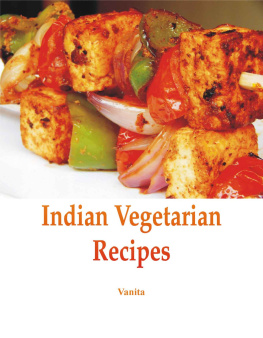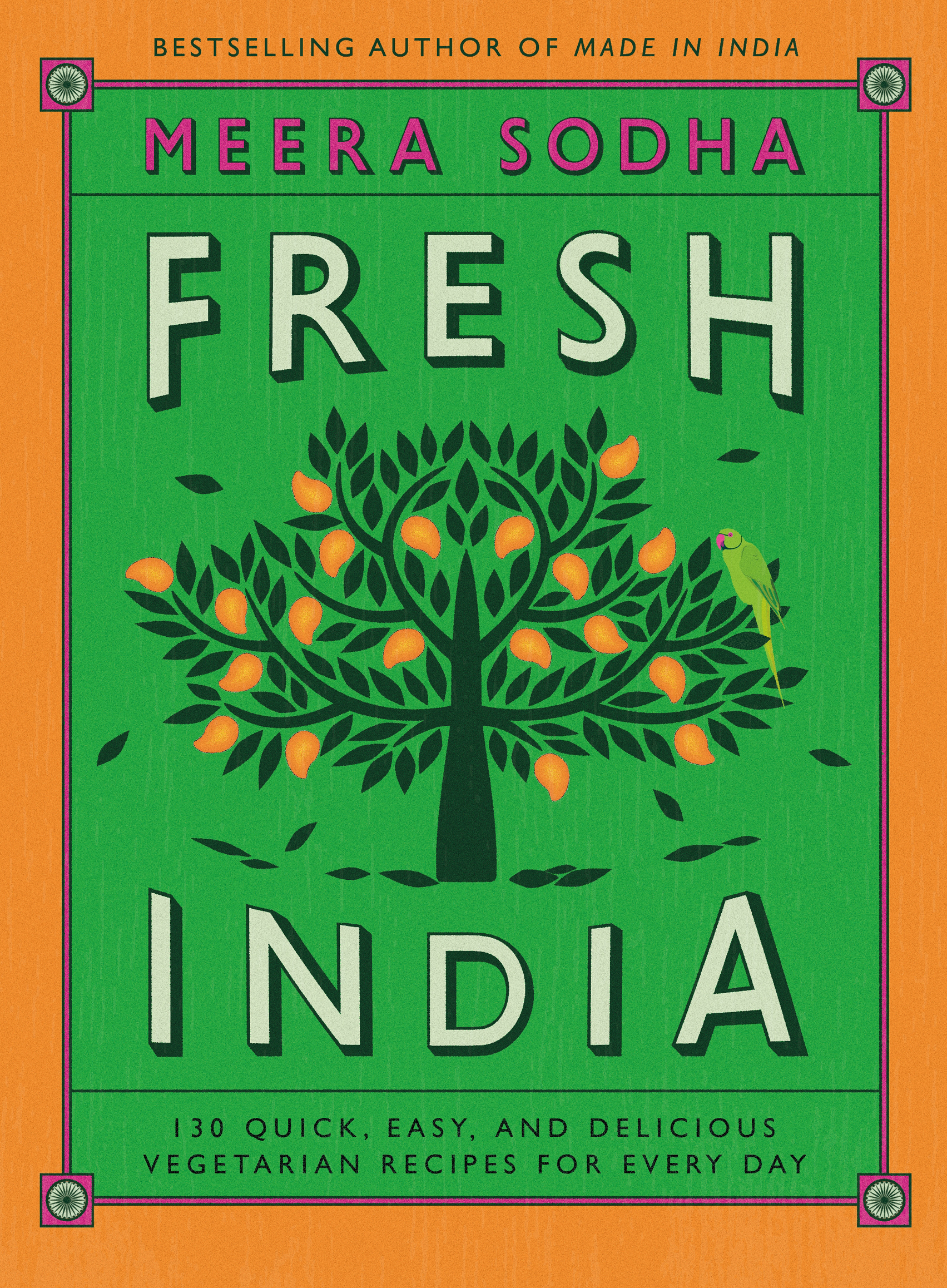Contents
Guide
Pagebreaks of the print version

The author and publisher have provided this e-book to you for your personal use only. You may not make this e-book publicly available in any way. Copyright infringement is against the law. If you believe the copy of this e-book you are reading infringes on the authors copyright, please notify the publisher at: us.macmillanusa.com/piracy.
FOR THE LOVE OF GOOD FOOD
FOR THE LOVE OF MY LIFE, HUGH
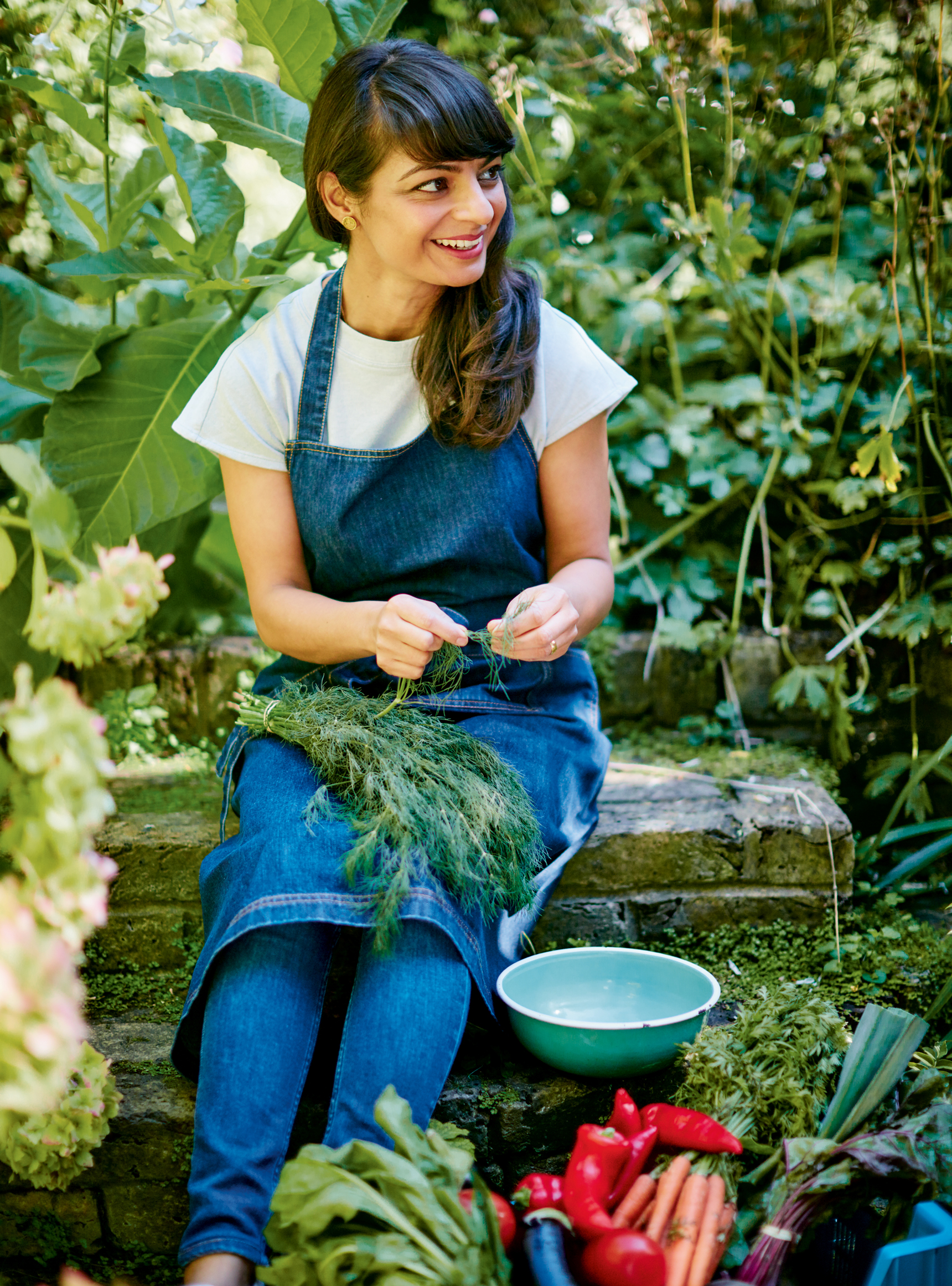
At the heart of every one of my recipes is a place called Gujarat. Its where, as long as anyone can remember, our family came from. And although my family has now settled in England, we are still Gujarati, and day in day out we talk, think, and eat like Gujaratis.
Gujarat, a small state on the western coast of India, has had a very big impact on Indian food culture. It all started in 269 BC when Emperor Ashoka banned the slaughter of any living animal in the name of peace. Since that time, the majority of the millions of Hindus in the state have been vegetarian. Over thousands of years, a rich and resourceful vegetable-first way of cooking has evolved. Home cooks, restaurant chefs, and street-food stallholders alike have all been creating simple but extraordinary dishes, using just what grows on the land and is in season.
Walk the streets of Ahmedabad or Rajkot and youll come across simple but heavenly potato curries cooked with garlic, mustard seeds, and tomatoes. Or sweet corn cooked in a deeply savory sauce of ground peanuts and yogurt and eggplants that have been smoked over red coals until they become deeply mysterious and creamy.
Ive long been fascinated by how this limitation of not cooking with meat has been the catalyst for new ways of thinking about and cooking with often familiar ingredients. Take the humble chickpea, for example. In Gujarati hands it has been transformed into a variety of dishes of different textures and formsfrom the gossamer-like chickpea bread dhokla, studded with sesame and mustard seeds, to a silken handkerchief-like pasta called khandvi and even a meltingly soft fudge.
This is the Gujarati way: creative, fresh, and always vegetable first.
Although Gujarat in particular is famous for this, a similar story exists all across India. For hundreds of millions of people in India, vegetarianism is not a choice but a way of life.
I grew up here in England in a small farming village in Lincolnshire. Behind our house were fields bursting with potatoes, leeks, corn, and chard, and down the road, mustard, cauliflower, and all sorts of greens. Mum adopted and adapted, spicing all this produce to make our very own special dishes, from zucchini kofta to green bean bhajis, rhubarb chutney, and even rainbow chard saag. With every dish, you could see the Gujarati resourcefulness and creativity at work.
When I moved from our little village to London twelve years ago, I continued to cook in much the same way as my mum had. As the years passed, I began to notice how my familys approach to cooking was so at odds with how most people thought about and experienced Indian food. While my family gravitated toward the fresh, the vibrant, and the seasonal, Indian food in the UK was often heavy, swimming in brown sauce and lacking in variety.
Ive written Fresh India to follow Made in India because I want to show you another type of Indian food, one that is vegetable led and packed with bold flavors. This is the food I love, which is influenced by how Gujaratis think about food but also by each and every state of India and occasionally Sri Lanka too.
Some of the dishes in Fresh India have been passed down the generations in my family and havent seen the light of day outside our home until now. Many have come from my travels all over India and the people I have met along the way, from home cooks to street stall vendors, temple cooks to chefs in top restaurants.
Others have come from my experiments in the kitchen, taking classic Indian techniques and flavors and imagining something new. After all, Im sure Im not the only one who has wondered what an Indian salad could look and taste like.
This is a book all about vegetables, but whether you call it a vegetarian cookbook is up to you. Im aware Ive written it at a time when a change is taking place in our attitudes toward both meat and vegetables. More of us are questioning how we farm, how we treat animals, and whether how we eat is sustainable, good for the environment and also for our health.
But my aim with this book is not to preach or to write only for vegetarians: it is to inspire you to cook a different, fresher, vegetable-led type of Indian food. To honor the seasons and what grows in our fields, and also to celebrate the way that hundreds of millions of Indians eat, and the Gujarati way of thinking.
Happy cooking.
Meera x
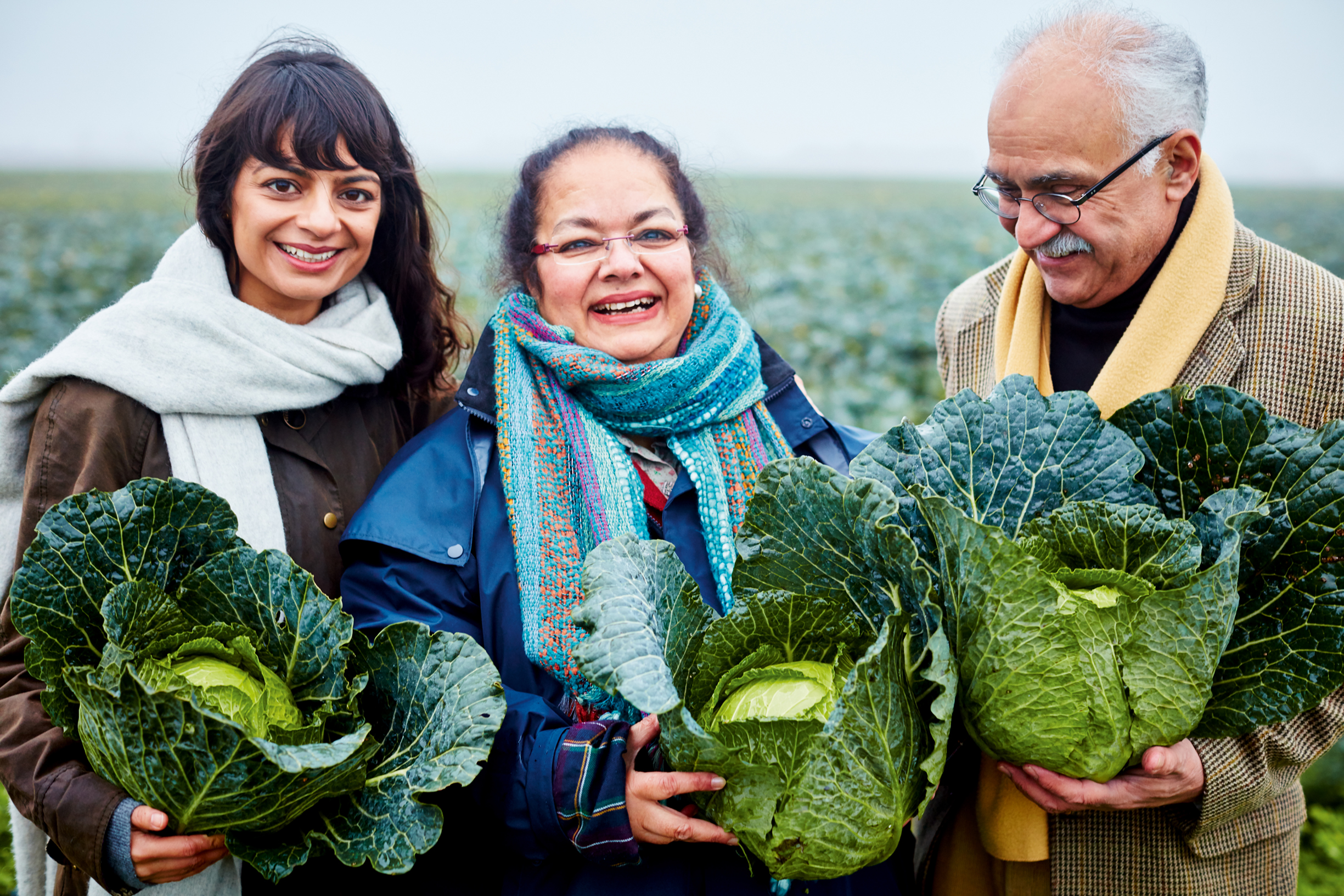
Ingredients vary in size and potency, but this is a good rough guide if youre substituting whole spices for ground, scaling up recipes, or dont have a pair of scales on hand.
GENERAL
1 teaspoon = 1/3 of a tablespoon = 5ml
1 tablespoon = 3 teaspoons = 15ml
RICE + LEGUMES
Appetites will vary (so plan accordingly), but as a general rule allocate 4 tablespoons of dry rice per person. As for legumes, allow pound of the dried variety per person, or a generous cup of cooked.
SPICES
You might find the following measures helpful if grinding whole spices:
BLACK PEPPER
1 teaspoon of peppercorns = 1 teaspoons of ground pepper
CARDAMOM
Approximately 12 pods = 1 teaspoon of ground cardamom
CORIANDER
1 teaspoon of coriander seeds = 1 teaspoons of ground coriander
CUMIN
1 teaspoon of cumin seeds = 1 teaspoons of ground cumin
FENNEL
1 teaspoon of fennel seeds = 1 teaspoons of ground fennel
MUSTARD SEEDS
1 teaspoon of mustard seeds = 1 teaspoons of ground mustard
NUTMEG
a nutmeg = 1 teaspoon of ground nutmeg
CITRUS FRUIT
1 lime = roughly 2 tablespoons of juice
I lemon = roughly 3 tablespoons of juice
GARLIC
1 fat clove of garlic = 1 teaspoon of finely chopped garlic
ONIONS
1 large brown onion = approximately 7 to 8 ounces
GF GLUTEN-FREE
DF DAIRY-FREE
VE VEGAN
Traditionally, Indians eat a couple of different dishes for lunch or dinner. Dotted around the table you might find one or two curries, a dal, some rice, and maybe a pile of chapatis. If youre lucky, youll also get a tray of chutneys and a side of raita too. We tend to focus the meal not on one central hero dish, but around a few smaller ones, so you get a lot more flavor and texture.
This wonderfully varied way of eating has evolved over many centuries, and has in part been made possible by the amount of time Indian women have spent in the kitchen. But given our busy lifestyles, we all like a bit of simplicity when it comes to cooking during the week, which might mean a one-pot dish cooked in half an hour or making something in the same time it would take to order takeout. So Ive written this book in a way that will satisfy different levels of time and enthusiasm. You can either combine a few different dishes or just cook one thing for dinner.


